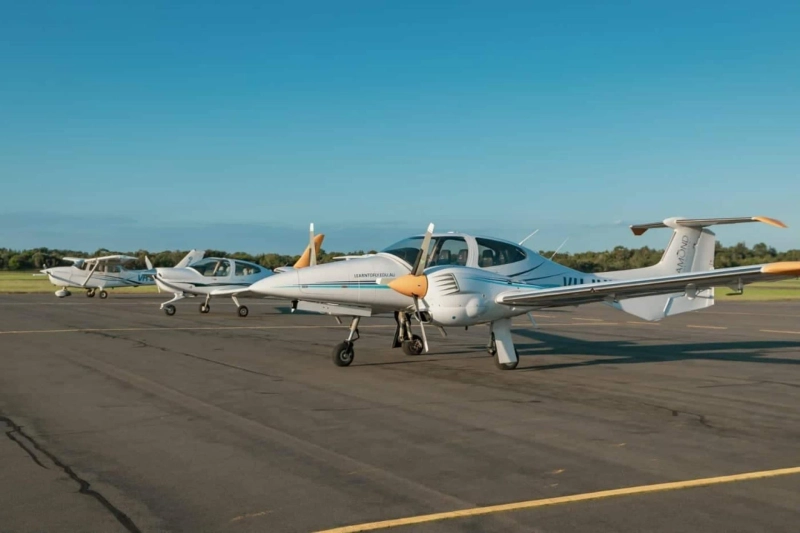As the global landscape of commercial aviation evolves, propelled by technological advancements and a growing emphasis on sustainability, the industry finds itself at the cusp of a transformative era. The latest trends and innovations that are reshaping the future of commercial aviation. From sustainable practices to groundbreaking technologies and enhancements in both aircraft design and passenger experience, the trajectory of the aviation sector is marked by impressive developments.
Sustainable aviation takes flight
One of the most significant shifts in the aviation industry is the concerted effort towards sustainability. Airlines are increasingly recognising the imperative to reduce their carbon footprint and embrace eco-friendly practices. Sustainable aviation fuels (SAFs) are emerging as a promising solution, derived from renewable sources, and engineered to curtail greenhouse gas emissions. As airlines worldwide commit to net-zero carbon goals, the integration of SAFs is becoming a cornerstone of their environmental initiatives.
In November of 2023, Emirates completed a demo flight from Dubai International Airport using an A380 with one of its four engines using 100% SAF. Virgin Atlantic has also proven the successful performance of SAF during a flight from London to New York. The Boeing 787 engines were fuelled completely by 100% SAF.
In parallel, aircraft manufacturers are exploring electric propulsion systems and hybrid-electric aircraft. These innovations aim to minimise the reliance on traditional jet fuels, paving the way for cleaner and more environmentally friendly flight operations. Sustainable practices are not just a trend but a fundamental shift towards a more responsible and eco-conscious future for commercial aviation.
Emerging technologies transform the skies
The future of commercial aviation is intricately linked with cutting-edge technologies that promise to redefine how we fly. Artificial Intelligence (AI) is playing a pivotal role in enhancing operational efficiency, from optimising flight routes for fuel efficiency to predictive maintenance, ensuring aircraft are in peak condition.
Moreover, the concept of autonomous flight is gaining traction, with advancements in autonomous systems and unmanned aerial vehicles (UAVs). While fully autonomous commercial flights are still on the horizon, the integration of autonomous technologies is gradually becoming a reality in certain aspects of aviation operations.
The implementation of 5G connectivity is set to revolutionise in-flight experiences, providing passengers with seamless internet connectivity, real-time entertainment streaming, and enhanced communication capabilities. The connected aircraft of the future is not just a mode of transportation but a hub of digital experiences, transforming the way passengers engage with the world from the sky.
Advancements in aircraft design
Innovations in aircraft design are reshaping the very structure of commercial planes. Lightweight materials, such as advanced composites and carbon fibre-reinforced plastics, are increasingly replacing traditional metals, contributing to fuel efficiency, and reducing overall weight. These materials, coupled with aerodynamic advancements, result in more streamlined and fuel-efficient aircraft.
The development of supersonic and hypersonic aircraft is another frontier that holds promise for the future of aviation. These high-speed planes have the potential to drastically reduce travel times, opening up new possibilities for long-haul flights and global connectivity. Although still in the experimental phase, the prospect of supersonic and hypersonic travel signals a paradigm shift in the way we conceive air travel.
Elevating the passenger experience
As the aviation industry embraces technological advancements, the focus on enhancing the passenger experience has become the focus of several airlines. From the moment passengers step into the airport, technology is deployed to streamline processes, reduce wait times, and create a more personalised journey.
Biometric technology, including facial recognition and fingerprint scanning, is becoming increasingly prevalent in airports, simplifying the check-in, security, and boarding processes. This not only enhances security measures but also contributes to a more seamless and efficient travel experience.
Inside the aircraft, the cabin itself is transforming. Modern interiors are designed for comfort, with smart seating arrangements and customisable spaces that cater to diverse passenger needs. In-flight entertainment systems are evolving to provide a more immersive and personalised experience, offering passengers a plethora of entertainment options at their fingertips.
Shaping the future of aviation education
Amidst these transformative trends, the role of aviation education, especially those undergoing flight training in Australia, becomes pivotal. The demand for skilled professionals, including individuals holding a Commercial Pilot Licence, is poised to grow in tandem with the expanding aviation landscape. Future pilots need to be equipped not only with traditional flying skills but also with a deep understanding of the evolving technological and sustainable aspects of modern aviation.
As aviation education adapts to these changes, aspiring pilots must undergo comprehensive training that encompasses the latest technologies, sustainability practices, and the nuances of operating advanced aircraft. The future of commercial aviation relies on a generation of pilots who are not only proficient in the art of flying but are also attuned to the industry\'s dynamic and progressive nature.
Soaring into the future
The future of commercial aviation is an exhilarating journey into uncharted skies, guided by the compass of sustainability, propelled by cutting-edge technologies, and defined by a commitment to passenger-centric experiences.



